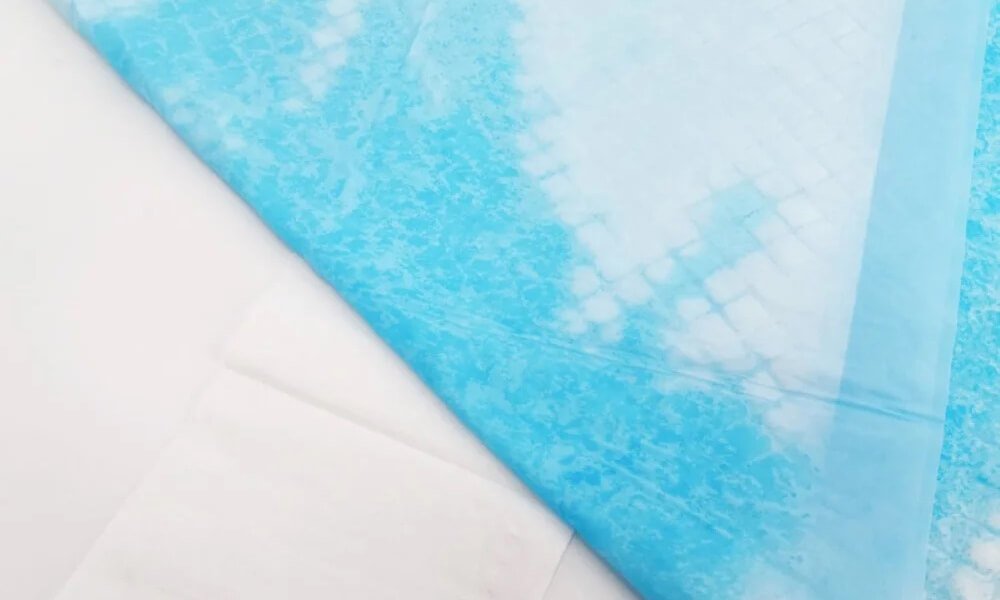Resguardos, often termed bed pads or chux, embody a quintessential element in maintaining hygiene in various care settings. Originating primarily for hospital use, these pads have transcended their initial scope, finding widespread utility in homes, childcare facilities, and elder care environments. Their fundamental purpose lies in protecting bedding, furniture, and any surface they cover from moisture and staining, which is particularly useful for individuals with incontinence or other medical conditions that necessitate such protection.
The genesis of underpads dates back to a time when healthcare facilities sought efficient ways to maintain hygiene and comfort for bedridden patients. This necessity gave birth to rudimentary forms of underpads, which have since evolved into more sophisticated and user-friendly designs. Modern underpads are not only more effective in protection but also consider aspects such as skin health and comfort, showcasing the progression from purely functional items to ones that enhance the overall care experience.
1. Types of Underpads
The dichotomy of underpads into disposable and reusable categories presents a fundamental understanding of their application and utility. Disposable underpads, often made from absorbent materials like fluff pulp and equipped with a waterproof backing, are designed for single use. They are particularly favored in settings where quick changes are necessary or hygiene mandates frequent replacement. Conversely, reusable underpads are crafted from durable fabrics like cotton or polyester, often with a waterproof layer, and are designed to withstand multiple washes and uses. This makes them a cost-effective and environmentally friendlier option over the long term.
Each type of underpad comes in various sizes and absorbency levels, catering to a broad spectrum of needs. In the case of chairs or small surface areas, small underpads are more suitable, while large ones will cover the beds or larger areas. Which one is better, disposable or reusable underpads? It often depends on individual preferences, particular care applications, and environmental considerations.
2. Practical Applications of Underpads
Underpads have found their niche not only in medical settings but also in the realm of home care and personal use. In hospitals, clinics, and other healthcare facilities, they are indispensable in providing a hygienic surface for patients, especially those who are bedridden or undergoing procedures that necessitate extra protection. Their ability to absorb fluids and protect bedding significantly reduces the risk of contamination and eases the process of maintaining cleanliness.
In-home settings, underpads offer immense benefits, especially for individuals with incontinence, mobility issues, or those requiring extra care. They provide a layer of protection to bedding and furniture, making them invaluable for caregivers and family members striving to maintain a clean and dignified living environment. Furthermore, underpads are increasingly being recognized for their role in home-based medical care, supporting the growing trend of at-home treatment and recovery.
3. Key Features of High-Quality Underpads
The effectiveness of underpads largely hinges on their absorbency and the quality of materials used. High-absorbency underpads are capable of handling significant amounts of liquid, a crucial feature for users with severe incontinence or those in post-operative care. The materials used in these underpads play a pivotal role in their functionality. Absorbent layers often consist of polymers that can hold multiple times their weight in fluid, while the outer layers are typically made of soft, skin-friendly fabrics to ensure comfort.
Comfort and skin health are paramount, especially for users who rely on underpads for extended periods. Poorly designed underpads can lead to skin irritation, discomfort, and, in severe cases, bedsores. Therefore, high-quality underpads not only focus on absorbency but also prioritize features like breathability, softness, and a gentle touch on the skin, thereby ensuring that protection does not come at the cost of comfort and health.
4. The Role of Underpads in Managing Incontinence
Incontinence, a challenge faced by many across various age groups, can significantly impact an individual’s quality of life. Underpads play a vital role in managing this condition, offering a practical and dignified solution to protect bedding, furniture, and other surfaces. By absorbing leaks and spills, underpads help maintain hygiene and comfort, which is crucial for those dealing with incontinence.
Understanding incontinence is key to appreciating the role of underpads. It’s a condition that can arise from various causes, including age-related changes, medical conditions, or post-surgical effects. Underpads provide a discreet and effective way to manage the symptoms, allowing individuals to lead a more comfortable and confident life. They not only protect surfaces but also reduce the workload of caregivers and maintain the dignity of those affected.
5. Underpads in Child Care
Underpads are a boon in the realm of child care, particularly for infants and toddlers. They serve as an essential tool in nurseries, daycare centers, and homes, offering a hygienic and easy-to-clean solution for diaper changes, potty training, and other incidents. The use of underpads in these settings is not just about maintaining cleanliness but also about ensuring a healthy environment for young children, who are more susceptible to infections and skin irritations.
Their role in maintaining hygiene extends beyond just absorbing spills or leaks. Underpads also protect mattresses and furniture from the wear and tear of frequent cleaning, thereby prolonging their lifespan and ensuring a sanitary environment for children’s activities and rest. The ease of changing and disposing of or washing these pads makes them a practical choice for busy caregivers and parents.
6. Environmental Impact and Sustainability
The environmental impact of disposable underpads is a significant concern, particularly in light of the growing awareness and emphasis on sustainability. These underpads, often made from non-biodegradable materials, contribute to landfill waste, prompting a search for more eco-friendly alternatives. The industry has responded by developing underpads made from biodegradable materials or those with a lower environmental footprint, marking a shift towards more sustainable practices.
Advances in eco-friendly underpad products include innovations in biodegradable polymers and the use of recycled materials. These developments not only address environmental concerns but also cater to a growing consumer base that prioritizes sustainability. The challenge locates in balancing the need for effective moisture protection with environmental responsibility, a task that the industry continues to tackle through research and innovation.
7. Selecting the Right Underpad
Choosing the right underpad involves considering various factors such as absorbency, size, material, and the specific needs of the user. For instance, higher absorbency underpads are preferable for overnight use or individuals with severe incontinence, while smaller, less absorbent pads might suffice for occasional leaks or as a precautionary measure. The material of the underpad also plays a crucial role – some users might prefer the softness and comfort of cotton. In contrast, others might prioritize the durability and longevity of synthetic fabrics.
It’s also important to consider the setting in which the underpad will be used. Within the bustling environment of a medical establishment, the utilization of single-use underpads often becomes a pragmatic choice, especially considering the brisk patient flow and rigorous sanitation protocols. In contrast, for home use, especially for long-term care, reusable underpads might be more economical and environmentally friendly. Guidance from healthcare providers and personal preferences should also be taken into account when making this decision.
8. Maintenance and Care of Reusable Underpads
The longevity and effectiveness of reusable underpads hinge on proper maintenance and care. Regular cleaning and sanitization are essential to ensure these underpads remain hygienic and functional. Most reusable underpads are designed to withstand multiple washes. Still, it’s important to follow the manufacturer’s instructions regarding washing temperatures and detergents to prevent damage to the absorbent layers and waterproof backing.
Proper drying is also crucial to maintain the integrity of the underpad. High temperatures will destroy the waterproof layer, so air drying or using a low-heat setting is often recommended. Regular checks for signs of wear and tear, such as thinning fabric or compromised waterproof layers, can help in determining when it’s time to replace the underpad. Proper care not only extends the lifespan of the underpad but also ensures it continues to provide effective protection.
9. Future Trends and Innovations in Underpad Technology
The underpad market is constantly evolving, with innovations aimed at enhancing comfort, effectiveness, and environmental sustainability. Emerging technologies in underpad design include the use of super-absorbent polymers that offer greater absorbency with less bulk and smart fabrics that can indicate when an underpad needs changing. These advancements are driven by the dual goals of improving user experience and reducing environmental impact.
Advancements in underpad technology might steer toward the refinement of environmentally benign materials and the integration of intelligent technologies to augment their utility. Innovations might focus on creating thinner, more discreet underpads that do not compromise on absorbency or developing materials that offer improved skin breathability and comfort. As the demand for effective and sustainable healthcare products grows, underpad technology is likely to continue evolving to meet these challenges.
10. Conclusion: The Integral Role of Underpads in Care and Hygiene
Underpads play an integral role in various aspects of care and hygiene. They offer protection, comfort, and dignity to individuals across different age groups and needs, from those dealing with incontinence to infants and older people. Their versatility and practicality make them indispensable in healthcare facilities, homes, and childcare settings.
This article has explored the different types of underpads, their applications, key features, and the considerations for choosing and maintaining them. It has also touched upon the environmental impacts and the future trends in underpad technology. As we advance, it’s clear that underpads will continue to be a vital component in providing care and maintaining hygiene, evolving in response to the needs of users and the environment.

